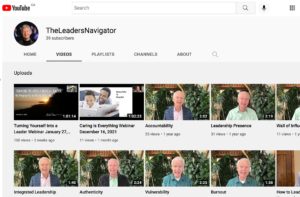Every decision we make brings us closer or further away from the life we want.
Do you agree or disagree?
If you agree, every decision becomes important, so how do we make the right ones?
The central purpose of my work is to help people connect with their true nature and express it consciously in their life and work.
I contend that the life we ultimately want is a life aligned with our true nature. Every decision we make takes us closer or further away from that life. We are born authentic, but the world tells us how we “should” be, so in order to feel safe we abandon our true self. I can’t imagine a sadder way to die than to realize you never showed up as your true self.
Authentic leadership is synonymous with being yourself, then creating environments where people can discover and express themselves. It’s that simple, and it’s that difficult.
Every time you make a choice you come closer or further away from yourself.
In the midst of all the noise, it is hard to tune in to the voice within, but living authentically is living consciously and deliberately. It starts by simply being still.
If you want to explore this concept further, check out my next complimentary webinar: https://lnkd.in/d37Prt4a
or the upcoming Authentic Leadership Academy: https://lnkd.in/gMi2euzp


